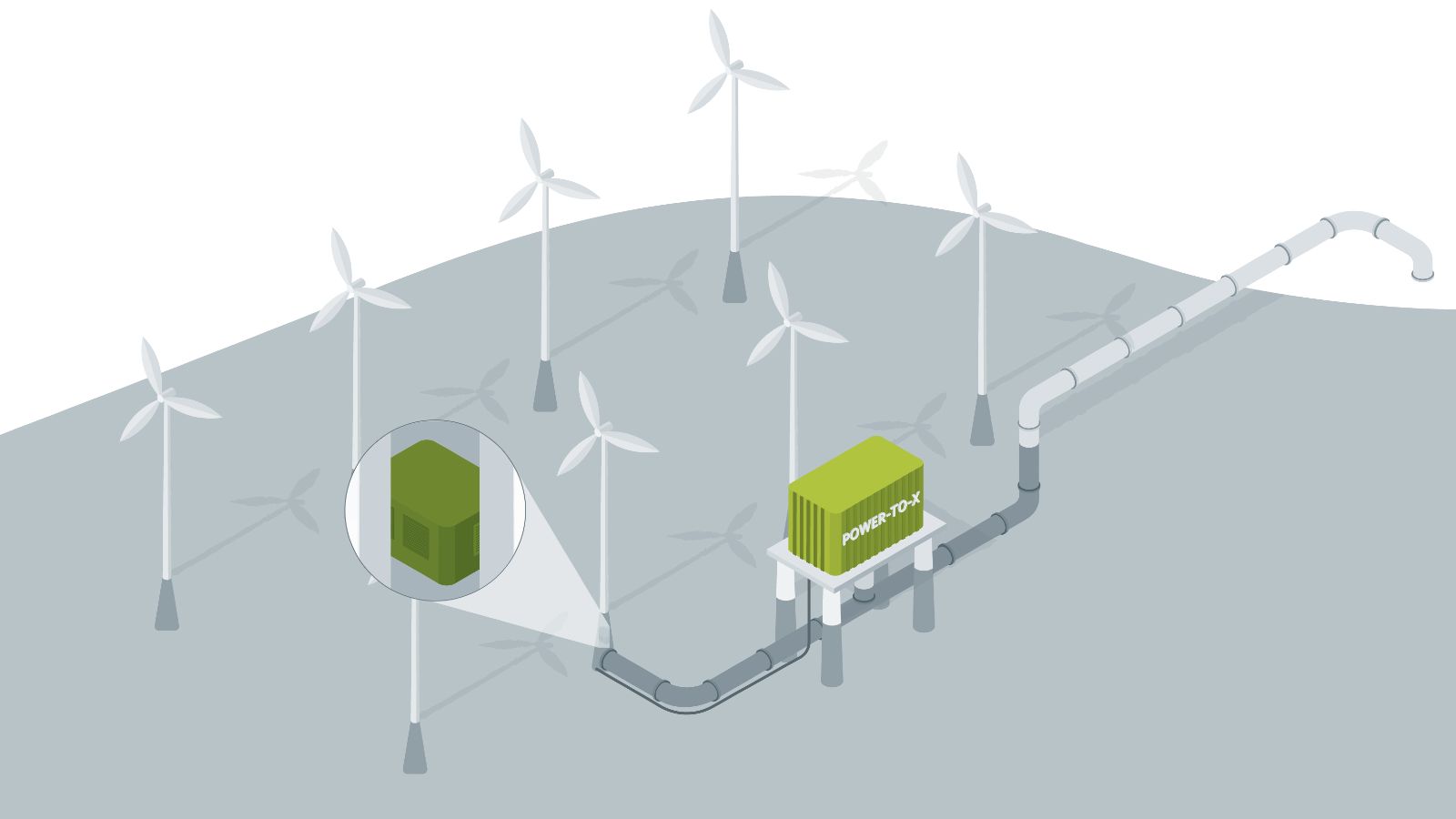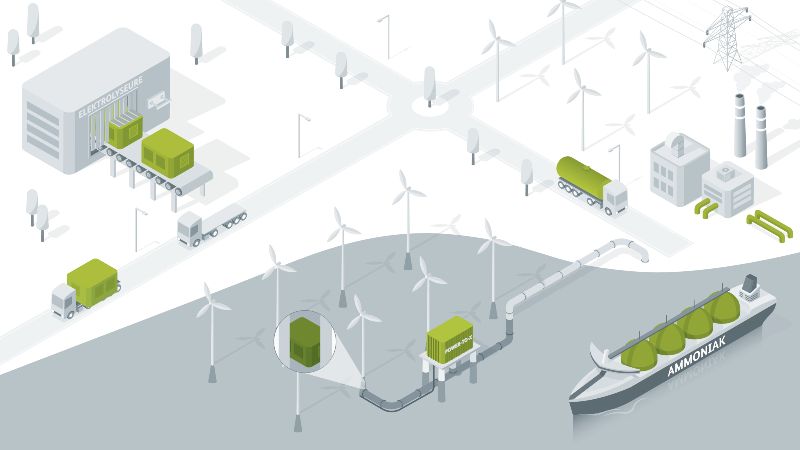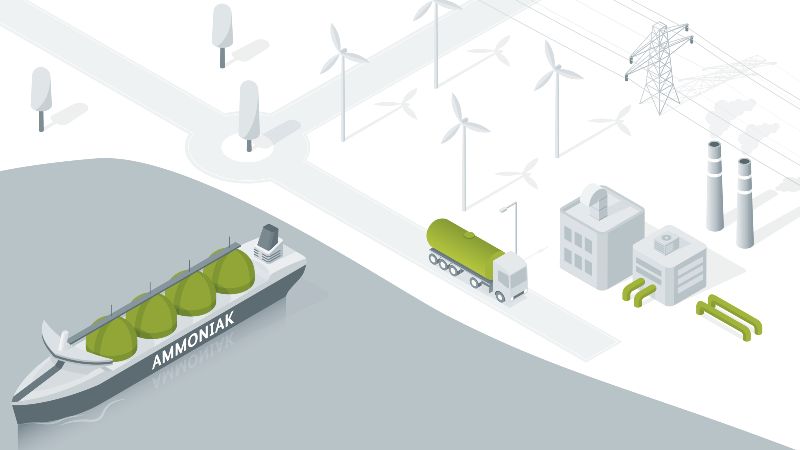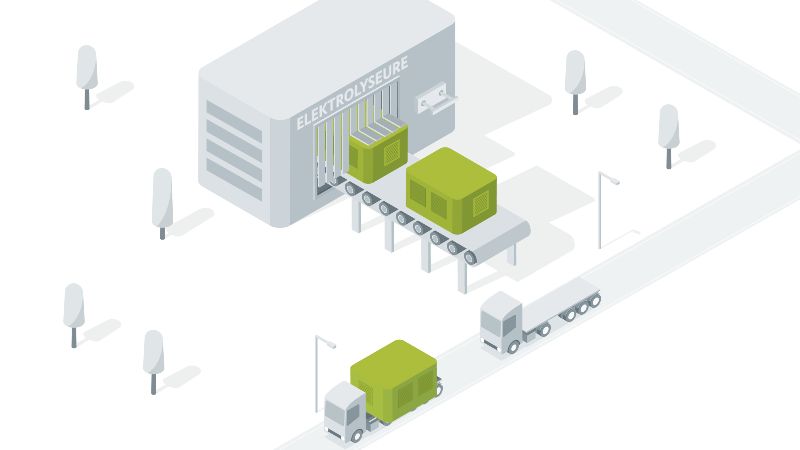H2Mare
How the H2Mare project intends to produce hydrogen offshore
At sea, the conditions are ideal for generating renewable electricity. The direct production of green hydrogen from offshore wind power facilities that are not connected to the grid can significantly reduce costs compared to onshore production. The H2Mare flagship project therefore explores the offshore production of green hydrogen and other power-to-X products.

Offshore wind turbines produce considerably higher amounts of electricity more regularly than their onshore counterparts. The average nominal power of onshore wind turbines, for example, is approximately 3.5 megawatts; for offshore turbines it is 5 megawatts. The hydrogen flagship project H2Mare aims to exploit this potential by using renewable electricity offshore to produce hydrogen and its secondary products.
The partners strive to couple the water electrolyzer directly with a wind turbine and thus provide innovative technologies to produce green hydrogen offshore. For this to succeed, both the electrolyzer and the wind turbine must be adapted. The H2Mare project H2Wind aims to adapt the electrolyzer to the rough conditions at sea, while the H2Mare project OffgridWind focuses on the necessary adjustments to the wind turbine. The direct coupling of wind turbines and electrolyzers will minimize the costs of hydrogen production, since infrastructure costs can be significantly reduced when a connection to the power grid is not needed. In addition, the decoupling of electrolysis and the grid eases the burden on local grid structures. Another advantage of offshore hydrogen production compared to onshore production is that there are much larger potential areas for the generation of wind energy.
The H2Mare project H2Wind conducts research into the electrolyzer, which will be coupled with a wind turbine. This novel, compact PEM electrolyzer is intended to work in an efficient and virtually self-sustaining manner despite the rough conditions at sea. To this end, its components must be tested under offshore conditions and adapted accordingly. The arrangement of the components is also being modified, as maintaining and installing the system at sea places much higher demands on the system design.
In addition, H2Wind is developing water treatment and supply processes for electrolysis but also for the storage of the hydrogen produced. By taking a holistic view of the facility, H2Wind can also identify the conditions for operating it profitably.
Full title: H2Wind 'Autarke Offshore-H2-Elektrolyse'
Funding reference no: 03HY301A-H
Total funding amount: 43,5 Mio. €
Partners: 8
Project duration: 01.04.2021-31.03.2025
The new offshore-ready electrolyzer will be installed on the platform of the wind turbine in the future. The H2Mare OffgridWind project is investigating the best way to combine the system and the electrolyzer. The concepts developed will then initially be tested on an onshore wind turbine.
In addition to a larger platform, the offshore plant will also require a new foundation in future. OffgridWind is conducting research into both as well as the transport of the hydrogen produced to the mainland. Moreover, the partners simulate the operation and calculate the costs throughout the entire life cycle of the wind turbines for offshore hydrogen production.
Full title: OffgridWind - Decentralized Off-grid Offshore Solutions for Wind-to-Hydrogen
Full title: OffgridWind - Dezentrale stromnetzunabhängige Offshore-Lösungen für Wind-to-Hydrogen
Funding reference no: 03HY300A-E
Total funding amount: 24,7 Mio. €
Partners: 4
Project duration: 01.04.2021-31.03.202
Due to the numerous advantages of offshore production, H2Mare also works on solutions to directly produce secondary products such as green methanol in addition to green hydrogen (i.e. offshore power-to-X). To ensure their success, the partners in the H2Mare project PtX-Wind also aim to pursue pioneering approaches such as seawater electrolysis.
Within the scope of the H2Mare project PtX-Wind, the offshore production of further power-to-X products – e.g. methanol, Fischer–Tropsch products, and ammonia – is being tested. To this end, CO2 and nitrogen are required in addition to water, which will be extracted locally from the air or the sea. In addition, PtX-Wind focuses on the co-electrolysis of CO2 and water as well as seawater electrolysis. If the use of seawater electrolysis is successful, the water extracted from the sea no longer needs to be desalinated before electrolysis.
PtX-Wind will first test the concepts developed onshore and then demonstrate a selected concept offshore on a floating platform. The aim is to produce Fischer–Tropsch products that can later be used as sustainable fuels.
Full title: PtX-Wind 'Offshore Power-to-X-Prozesse'
Funding reference no: 03HY300A-R
Total funding amount: 38,3 Mio. €
Partners: 18
Project duration: 01.04.2021-31.03.2025
All technical H2Mare projects also investigate issues relating to safety and environmental impacts. Life cycle assessments and technology evaluations are also being conducted.
The H2Mare project TransferWind is dedicated to overarching issues as well as communication and knowledge transfer. The project also focuses on acceptance management and issues relating to regulatory framework conditions.
TransferWind aims to answer overarching issues concerning all H2Mare projects. These include, for example, issues relating to regulatory framework conditions. In addition, TransferWind combines the results of the other H2Mare projects and establishes a continuous exchange between science, industry, politics, and civil society. On this basis, measures can be drawn up to ensure that future offshore facilities are constructed and operated in a secure and environmentally friendly manner. The partners are also responsible for external communication and acceptance management. This includes workshops for stakeholders and educational outreach.
Full title: TransferWind 'H2Mare Forschungs-Transfer'
Funding reference no: 03HY303A-P
Total funding amount: 7,4 Mio. €
Partners: 14
Project duration: 01.04.2021-31.03.2025
These are the partners from H2Mare (in German)
The data shows the implementing agencies of the H2Mare partners (as of 01.08.2023).





